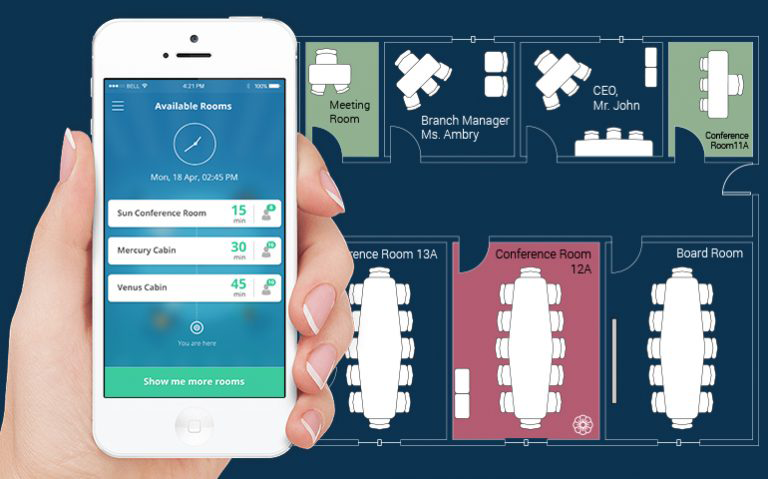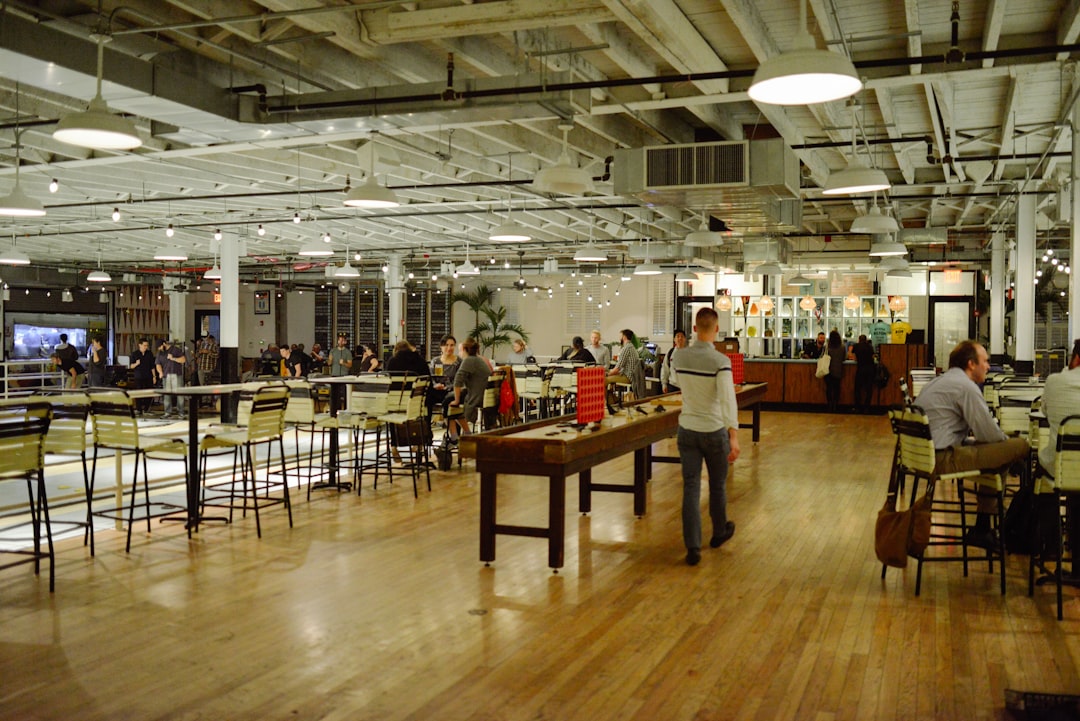The Dawn of the AI-Infused Workspace: Key Innovations
The modern office is undergoing its most significant transformation in a century. No longer just a collection of desks and meeting rooms, the workplace is evolving into a dynamic, intelligent ecosystem. At the heart of this revolution is the integration of artificial intelligence into the very fabric of office hardware. The latest developments in AI Office Devices News are not merely incremental upgrades; they represent a fundamental rethinking of how we collaborate, manage physical spaces, and foster a productive and healthy work environment. This shift is driven by the dual pressures of enabling seamless hybrid work and making the physical office a compelling, safe, and efficient destination. From conference rooms that anticipate your needs to buildings that optimize their own energy consumption, AI is turning passive spaces into active partners in our work lives.
This article delves into this exciting frontier, exploring the key innovations that are shaping the future of work. We will examine the technologies powering these smart devices, from advanced computer vision to on-device edge computing. We will also analyze the profound implications for employee experience, operational efficiency, and corporate strategy. As businesses navigate the complexities of the new work paradigm, understanding these advancements is no longer optional—it is essential for building a resilient, collaborative, and future-proof organization. The conversation has moved beyond simple connectivity; it’s now about creating cognitive spaces that understand and respond to the people within them.
Intelligent Collaboration Platforms
The cornerstone of the modern hybrid office is the meeting room, and AI is completely redesigning this critical space. Video conferencing hardware is now infused with intelligence that eradicates the traditional friction points of virtual collaboration. The latest AI Audio / Speakers News highlights devices with multi-microphone arrays that perform advanced voice-leveling and background noise cancellation, ensuring every participant is heard clearly, whether they are next to the device or at the back of the room. This technology can distinguish human speech from sounds like typing, shuffling papers, or a nearby siren, creating a studio-quality audio experience. Beyond audio, the world of AI-enabled Cameras & Vision News is bringing cinematic quality to meetings. AI-powered cameras automatically frame the active speaker, pan across a room to follow a presenter, or create individual video streams for each in-room participant, placing them on equal footing with their remote colleagues. This concept, often called “meeting equity,” is crucial for making hybrid interactions feel natural and inclusive.
Smart Space Management and Analytics
One of the most powerful applications of AI in the office is in understanding and optimizing the physical environment itself. By leveraging a network of intelligent sensors, organizations can now gather actionable workplace analytics. This is a major theme in AI Sensors & IoT News, where discreet, ceiling-mounted sensors combine thermal imaging, motion detection, and Bluetooth beaconing to provide real-time, anonymized data on room occupancy, space utilization, and traffic flow. This data powers a new generation of “smart” room booking experiences. An employee can simply walk into an available room, and the space automatically books itself on their calendar. Conversely, if a booked room remains empty, it is automatically released back into the inventory. These systems, often integrated with AI Assistants News, can even suggest the best room for a meeting based on the number of attendees, required A/V equipment, and even the time of day to minimize foot traffic in congested areas.
The Rise of Ambient Computing in the Office
Drawing inspiration from trends in Smart Home AI News, the office is becoming an ambient computing environment where technology fades into the background, responding intuitively to user presence and commands. Voice activation is a key component of this shift. Employees can start meetings, adjust room lighting, lower projection screens, and control temperature simply by speaking natural language commands. This not only provides a seamless, touch-free experience—a significant benefit in a health-conscious era—but also reduces the cognitive load of managing complex A/V equipment. This integration of various systems, from HVAC to multimedia, is a practical application of concepts seen in AI Lighting Gadgets News and broader IoT infrastructure, creating a workspace that adapts to its occupants’ needs in real time.
Deconstructing the AI: The Tech Behind the Transformation

The remarkable capabilities of modern office devices are not magic; they are the result of sophisticated AI models running on increasingly powerful hardware. Understanding the core technologies is key to appreciating their impact and potential. The intelligence we see on the surface is built upon layers of innovation in edge computing, computer vision, and natural language processing, each contributing to a more responsive and secure workplace environment.
Edge Computing and On-Device AI
A critical trend shaping the latest AI Office Devices News is the shift from cloud-based processing to the edge. AI Edge Devices News reports a surge in hardware with specialized processors (NPUs, or Neural Processing Units) capable of running complex AI models directly on the device. For an office environment, this has profound implications for privacy and security. For instance, an AI-powered camera that counts people in a room can perform the entire analysis locally. It processes the video feed, extracts the metadata (e.g., “5 people detected”), and sends only that anonymous data point to the cloud analytics platform. The raw video footage never leaves the device, or even the room. This approach dramatically reduces privacy concerns and is a cornerstone of responsible implementation, a topic frequently covered in AI Security Gadgets News. Furthermore, edge computing ensures low latency, allowing for real-time responses like instant speaker framing in a video call without the delay of a round trip to a data center.
Computer Vision and Sensor Fusion
Computer vision is the technology that allows these devices to “see” and understand the world around them. The progress in AI-enabled Cameras & Vision News has been staggering. Modern systems go far beyond simple motion detection. They employ sophisticated neural networks to perform object recognition (identifying people, laptops, whiteboards), facial detection (for framing, not identification), and even gesture recognition. The next layer of intelligence comes from sensor fusion. An intelligent office device doesn’t rely on a single input. It combines data from multiple sources to build a comprehensive picture. For example, it might fuse data from the camera (seeing people enter), microphones (hearing them speak), and an infrared sensor (detecting body heat) to confirm a room’s occupancy with near-perfect accuracy. This multi-modal approach, central to AI Monitoring Devices News, makes the system more robust and less prone to error than any single sensor could be on its own.
Natural Language Processing (NLP) and AI Assistants
The ability to understand and process human language is what makes devices truly interactive. The integration of advanced NLP is transforming collaboration. During a meeting, AI models can provide real-time transcription, identifying different speakers and creating a searchable record of the conversation. More advanced systems can even perform live translation, breaking down language barriers in global teams. Post-meeting, NLP is used to generate automated summaries, identify key action items, and highlight important decisions, saving hours of manual work. The integration of conversational AI, a hot topic in AI Assistants News, allows for hands-free control of the entire meeting experience. A simple command like, “Hey Webex, call Sarah’s personal room and start recording,” can trigger a complex series of actions, making the technology accessible to even the least tech-savvy users.
More Than Efficiency: The Human Impact of AI in the Workplace
While the operational benefits of AI office devices are clear, their most significant impact may be on the human experience of work. By automating mundane tasks, removing collaboration friction, and creating healthier environments, this technology has the potential to improve employee satisfaction, well-being, and inclusivity. The focus is shifting from purely technical specifications to how these tools can foster a more connected and supportive work culture, especially in a hybrid model.
Enhancing the Hybrid Work Experience
The greatest challenge of hybrid work is bridging the gap between remote and in-office employees. AI-powered devices are central to solving this “meeting equity” problem. When an AI camera intelligently frames each in-room speaker in their own video tile, it gives remote participants a much clearer view of who is talking and allows them to read non-verbal cues more effectively. This prevents the “disembodied voice” problem where remote workers feel like passive observers. Some forward-looking concepts, blending with AR/VR AI Gadgets News, even project life-sized video of remote participants onto dedicated screens to create a stronger sense of presence. Furthermore, features like automated summaries and transcriptions ensure that anyone who couldn’t attend a meeting live, regardless of their location or time zone, can catch up quickly and completely, fostering a more asynchronous and flexible work style.

Promoting Employee Wellness and Safety
The intelligent office is also a healthier office. By integrating data from environmental sensors, facilities managers can ensure a safe and comfortable workspace. This overlaps with trends seen in Health & BioAI Gadgets News and AI Sleep / Wellness Gadgets News, applying similar principles to a corporate setting. For example, AI systems can monitor CO2 levels in a meeting room and automatically adjust ventilation to maintain optimal air quality, which has been shown to improve cognitive function. They can also monitor ambient noise levels and light quality, providing data to inform office design that reduces stress and eye strain. In the context of a safe return to the office, occupancy data allows companies to manage density, ensure compliance with social distancing guidelines, and dynamically schedule cleaning crews to focus on high-traffic areas, providing employees with tangible evidence of their company’s commitment to their well-being.
Data-Driven Decision Making for Facilities Management
The analytics generated by this ecosystem of devices provide invaluable insights for corporate real estate and facilities teams. Instead of relying on anecdotal evidence or manual surveys, they now have continuous, objective data on how their spaces are actually used. They can identify which types of meeting rooms are most in demand, which collaboration zones are being underutilized, and how traffic patterns shift throughout the day. This data can inform strategic decisions worth millions of dollars, such as whether to lease more office space or reconfigure the existing footprint to better suit new work patterns. At a macro level, this contributes to the vision of smarter urban environments, making the office a microcosm of trends seen in Smart City / Infrastructure AI Gadgets News, where data is used to optimize resource allocation and improve quality of life.
Implementation and Considerations: A Roadmap for the AI Office
Adopting a new generation of AI-powered office technology is not a simple plug-and-play exercise. It requires careful planning, a focus on user experience, and a proactive approach to ethical considerations. A successful rollout can transform a workplace, but a poorly executed one can lead to wasted investment, employee frustration, and even a breach of trust. Organizations must navigate this landscape with a clear strategy that balances innovation with practicality and responsibility.
Best Practices for Adoption

To ensure a successful implementation, organizations should begin with a clear business problem they are trying to solve. Is the goal to improve meeting equity, optimize real estate costs, or enhance employee wellness? Starting with the “why” ensures that technology is a tool, not just a novelty. Secondly, prioritize integration. The most powerful solutions are those that seamlessly connect with existing workflows and platforms, such as calendar systems (for smart booking), collaboration apps (like Slack or Microsoft Teams), and building management systems. Finally, focus relentlessly on the user experience. This involves not only selecting intuitive devices but also investing in comprehensive training and change management to help employees understand the benefits and feel comfortable using the new tools. This is where insights from fields like AI for Accessibility Devices News can be valuable, ensuring that new systems are usable by everyone.
Common Pitfalls to Avoid
The most significant pitfall in deploying smart office technology is neglecting privacy and ethics. The “creepy factor” is real. Employees need absolute transparency about what data is being collected, how it is being used, and how their privacy is being protected. Best practices include using systems that anonymize data at the source, having clear and accessible data governance policies, and never using the technology for individual performance monitoring. This is a critical intersection with AI Security Gadgets News, where robust security protocols are non-negotiable. Another common mistake is succumbing to data overload. The sheer volume of analytics can be overwhelming. It’s vital to focus on key performance indicators (KPIs) that align with strategic goals rather than getting lost in a sea of irrelevant metrics. Lastly, organizations should be wary of vendor lock-in. Opting for platforms built on open standards and APIs provides greater flexibility to integrate new technologies in the future, preventing a dependency on a single proprietary ecosystem.
Conclusion: The Future of Work is Sentient
The wave of innovation detailed in the latest AI Office Devices News marks a pivotal moment in the evolution of the workplace. We are moving beyond connected devices and into the era of cognitive spaces—environments that are aware, responsive, and actively contribute to productivity and well-being. From intelligent cameras that foster inclusivity to sensor networks that optimize for health and efficiency, AI is fundamentally reshaping the relationship between people and their physical work environment. The technologies underpinning this shift, such as edge AI and sensor fusion, are not just enhancing existing processes but enabling entirely new ways of working.
For business leaders, the takeaway is clear: investing in this technology is an investment in your people and your operational resilience. By thoughtfully implementing these tools, organizations can create a workplace that is not only more efficient and cost-effective but also more equitable, engaging, and human-centric. The future of work is not just hybrid; it is intelligent. And the office of the future is not just a building, but a sentient partner in our collective success.










